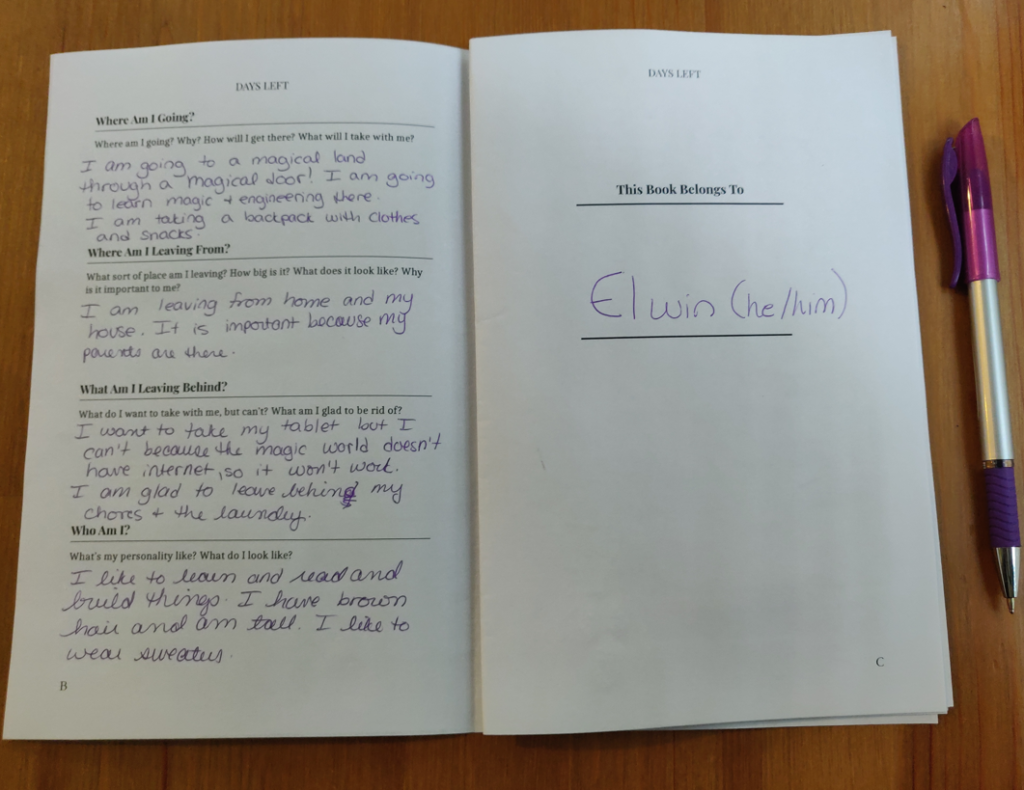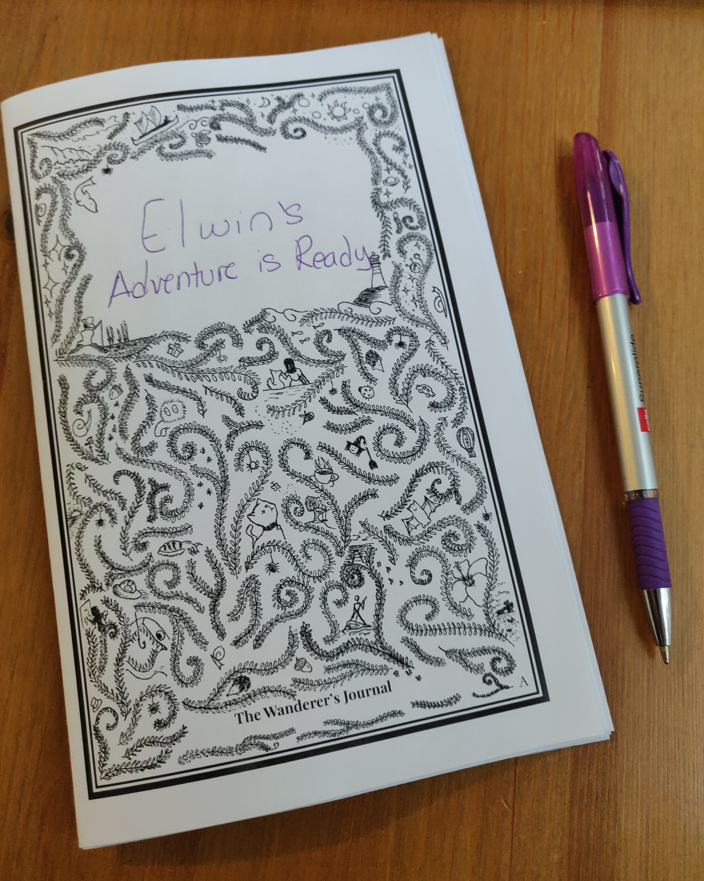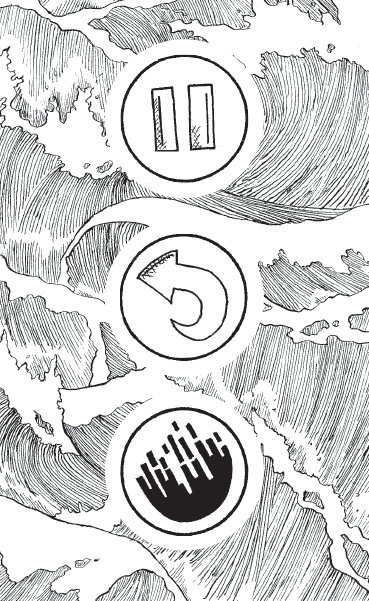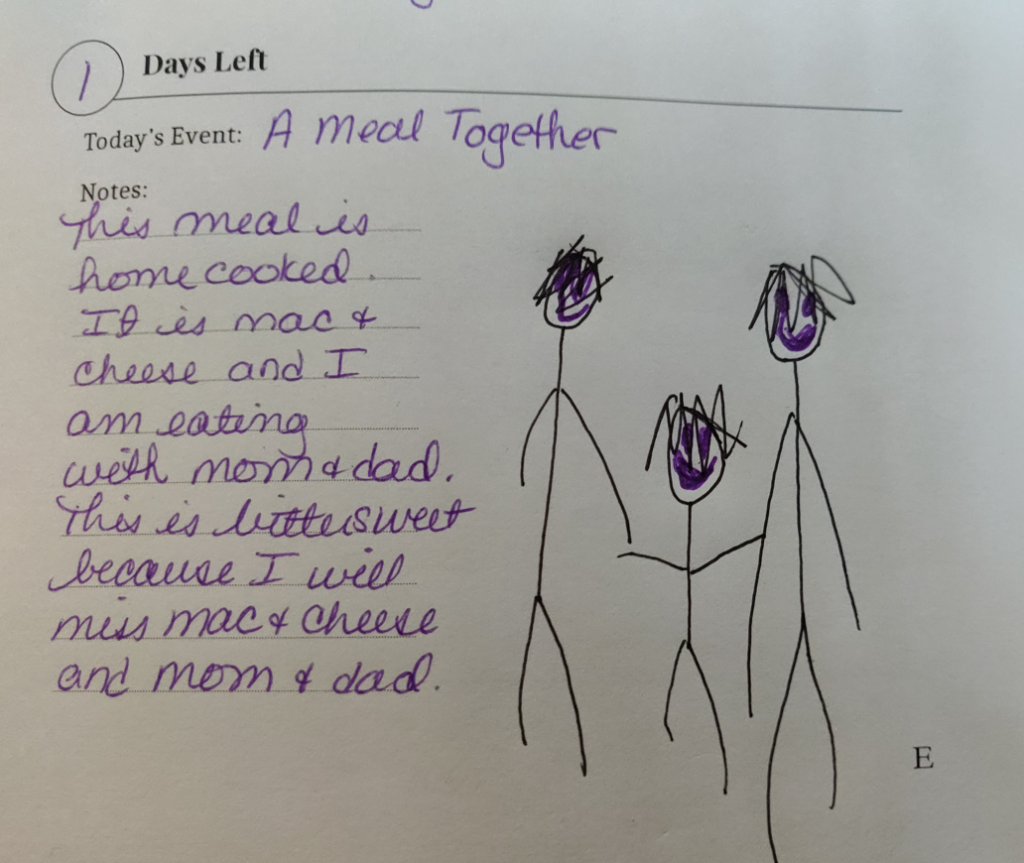Review of Wanderlust: A tabletop RPG about saying goodbye
Jump to:
Wanderlust is adjustable for all ages (reading/writing required)
Everything in Wanderlust is easily adjustable to fit a wide skill range. In our game with my kid (4yo), since he can’t read or write well, I helped to read and ask prompts then transcribed what he said, and it worked out really well. As long as one person playing the game knows how to read and write, they can take on the facilitator role so the whole group can play.
You also get to pick the content for this game, so you can make the theme and topics cover anything that you want in order to fit your player’s interests and tone. There’s also safety tools built in (which I’ll cover more in mechanics) to make sure that the content stays appropriate for each person in the group, even as multiple players are adding their own descriptions and flair.
Any setting works for Wanderlust
Wanderlust is built in a way that works for any setting. So, if your kid wants to play a dinosaur scientist or a migrating bird or the conductor on a magical train, they all can work!
The questions are designed to be very general and let you fill in the gaps as you play so that it truly is system agnostic. When I was playing with my kid, I tried to think of different settings that may conflict with some of the prompts, and I honestly couldn’t think of any that applied to the cards we pulled.
Playing a shared character in Wanderlust
The character in Wanderlust is one of the very unique aspects of the game. Instead of each player having their own character, everyone takes turns playing and adding to the same character. You create them together, based on prompts in the booklet, and take turns playing out their story.

When I played with my kid, I let him make a lot of the decisions because he was getting really into it, but, as we went around the table, he was also happy to find out what I would add. A lot of times, when we’re playing separate characters, it can be hard to shift the focus from my kid’s character because he wants to do everything, but with Wanderlust having only one character, everyone has ownership. I think it was easier for him to pass the turn around because we were still finding out what his (our) character was doing, and he was open to seeing that.
Unique mechanics in Wanderlust
Event cards driving the story and randomization in Wanderlust
Randomization in Wanderlust is done entirely through event cards. When it is a player’s turn, they draw and choose an event card that provides prompts for their turn and setting up the act that will follow.
There’s no dice or counting, only reading and answering here, which I really liked because it was easy to run while allowing us to go very in depth with our character.
I also liked how you draw three event cards and then pick the one that you want to play out – this helps to allow some choice so you’re comfortable with what you’ll be doing your turn but still creates that randomized element, so it isn’t the same game every time.
The cards are also really nice because they’re available to print or to use in Roll20, so you don’t need to buy a separate deck of cards to play even though the prompts are unique.
Collaboration playing a key role in Wanderlust
When it comes time to act out a scene based on the results of the event cards, everyone gets involved, not just the player whose turn it is. The turn-holder plays the group’s character, one of the other players is the “director” of the scene, and the others play supporting roles, like NPC’s, or can add suggestions. After each turn, the roles rotate around the table so everyone gets a chance to add to the wanderer, flavor the scene, and play different characters.
Having the shifting roles had another very interesting effect on my kid and me. Typically, I lead a lot of the story but will shift and let him tell the story for some games as well – he chooses the setting, helps with the map, suggests characters, etc. However, with Wanderhome, this gave him direct control of the world that his character was in, and the level of investment that he had in setting the details was astounding. He asked way more questions and he really liked playing NPC’s interacting with his/our character.
Journaling, and drawing, playing a critical part in Wanderlust
The journal for Wanderlust comes with the game as a beautiful printable booklet that you can fold together to create the story of your character.

When you pull an event card, it gives you prompts for adding details about the who, what, when, and where of the event, which you’ll answer in your journal. There’s also a prompt to draw some element of the scene in the journal space.
The journaling aspect is great for story-keeping and guiding the scene while it’s being acted, and it only takes a short time each turn to set up. For kids who are learning to write, this is a great low pressure exercise to help with writing and to show its importance. For kids who can’t write yet (like mine), it was a great opportunity to allow expression through drawing – he was still able to contribute to the journal even though I was the one writing, and I really liked that he could be involved in that way.
Safety tools in Wanderlust integrated into the game design

Wanderlust does a fantastic job of integrating safety tools without requiring a lot of extra steps. The deck of cards that comes with the game has all of the safety tool symbols (pause, retcon, and fade to black) on it so that if one of them is required, a player can just tap the appropriate symbol on the deck of cards.
It’s seamlessly pictorially included with another element of the game, so it’s available to all players and understandable. I explained it to my kid once, comparing the art on the cards to a remote control for the game, and it was clear.
What did my kid think about Wanderlust?
First, he loved getting to draw in the journal and was ecstatic to answer so many questions. We had fun playing out the scenes, like we do with most tabletop RPGs that we play, but this one in particular, I think he really connected with. He got very invested in our magic engineer character, and, as is intended by the game, when it was time for our character to say goodbye, he wanted to know what would happen next and if he’d be OK. A lot of times, when we play a game, my kid will continue to act out the story afterwards as if we were still playing, but, with this one, he had more questions. He wasn’t upset, but he was really curious in a way I hadn’t seen before, and I think it is a sign of how much he connected with our character.
A favorite moment that I wanted to share about playing Wanderlust with my kid
So, I don’t usually have this section in my reviews, but this game warrants it because it stirred a very happy-sad moment for me. During our last day left in the game for our wanderer, we pulled the “A Meal Together” card on my kid’s turn. He kept this one very simple; this part of the story was just about how, before our character, Elwin, would leave the next day, he would spend dinner with his mom and dad eating mac and cheese:

From the prompts, I explained to him what “bittersweet” means, and his response was that when he left he would miss mac and cheese and his mom and dad because they’re all his favorites. He then asked why I started crying.
One day this will be him going off to be a magic engineer or whatever he sets his heart on. There’s a long way to go until then, and I’m going to treasure what we have leading up to that, but it’s there too, and it is a bittersweet feeling that I honestly kind of needed to feel and see right now.
Overall thoughts on Wanderlust
Wanderlust is a beautiful tabletop RPG with unique mechanics and a unique feel. It allows players to connect with the game in multiple ways through journaling and drawing, and it allows players to connect with each other through collaborative play, a shared character, and mutual respect. This is a wonderful game for practicing writing and for reflection that was fun for my kid and a bit heart-warming for me. It is a perfect game for playing and experiencing together.
Find a copy of Wanderlust
You can find Wanderlust on itchio, and you can find Star, Wanderlust’s creator, on twitter.
Wanderlust is a wonderful game, and I hope you get the chance to check it out and enjoy it too! Let me know below if you try it out and what your thoughts are!
If you liked this post, make sure to subscribe to the TTRPGkids monthly newsletter to stay up to date on the latest reviews, tips and tricks, game and podcast list updates, and more! Thank you for playing tabletop RPGs with your kids and sharing this awesome hobby with the next generation!


2 thoughts on “Review of Wanderlust: A tabletop RPG about saying goodbye”